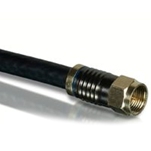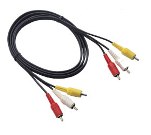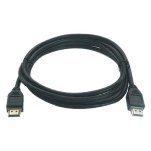Cable TV Set-Top Box Wiring Options
- Topics:
- Installation Guide
- Cable TV
Wiring Options For Your Cable TV Set-top Box
The Motorola digital set-top boxes have several different wiring options. Here is an overview of each of them. As every configuration is slightly different based on your TV and any additional equipment you may be using, please select the one that works best for you. There are several additional alternate connection options supported by the Motorola DCH and DCX set-top boxes. The most common are covered below. For additional options for your specific setup requirements, please consult the user manual for the set-top box you are using and your TV, DVD, or other home entertainment equipment. In addition, we’ve included instructions for wiring your stereo receiver to your Cable to receive your local and regional FM radio stations.
Improve Your FM Radio Reception Using Your Cable
Enjoy great reception on your local and regional radio stations by hooking up your stereo receiver to your cable connection. Read Cable FM Service Instructions for detailed instructions on how to wire your stereo receiver to receive your local radio stations via your cable connection.
Instructions for Wiring Your Stereo Receiver
Coaxial CableThis is the easiest way to connect a television to a set-top box. A single coaxial cable carries both your audio and video signals for standard-definition video. A coaxial cable will not support high-definition (HD) television. To experience stereo and Dolby Surround Sound when available, you will need to connect your Motorola DCT 700 set-top box using composite (RCA type) cables. Simply connect a coxial cable from your TV to the “To TV/VCR” port on the back of your set-top box. Make sure your connections are tight. Turn on your TV and tune to channel 3. |
 |
Composite CablesIf you are looking for the best standard-definition video and audio sound quality on a Motorola DCT 700 set-top box, composite cables are your best option if your television supports a composite connection. Using composite cables will support standard-definition video, and stereo audio when available. A composite connection will not support high-definition (HD) video signals. Connect the composite cables from your set-top box from the Audio L (white), Audio R (red), and Video (yellow) on your set-top box to the Audio In (Left and Right) and Video In connection on your TV. Take a moment to make sure your connections are tight and the colors match up. Also be sure to confirm that you are plugging the connections into the Audio/Video In ports on your TV and not the Audio/Video Out ports. Finally, turn on your TV and select the appropriate video source on your TV for the connection type you used. |
 |
Component CablesComponent cables support both standard-definition (SD) and high-definition (HD) video signals on Motorola DCH or DCX set-top boxes, but does not support audio. If you are using component cables to connect your set-top box to your television, you will need to use a Digital Coaxial Audio, Composite Stereo Audio, or Digital Optical Audio (Toslink) cable to connect the sound to your television. To simplify installations, some component cables include two additional cables, to carry your sound with and Audio L (white) and Audio R (red). Then turn on your TV and select the appropriate video source on your TV for the connection type you used. |
 |
HDMI CableHigh-Definition Multimedia Interface (HDMI) carry’s both audio and video signals. We recommend the use of an HDMI cable as it provides the sharpest picture and is the only consumer cable that supports Dolby TrueHD Surround Sound and DTV Master HD Surround Sound. If available on your Television, this is the easiest and best way to conect your high-definition television (HDTV) to a Motorola DCH or DCX series HD set-top box. Next, turn on your TV and select the appropriate video source on your TV for the connection type you used. |
 |
